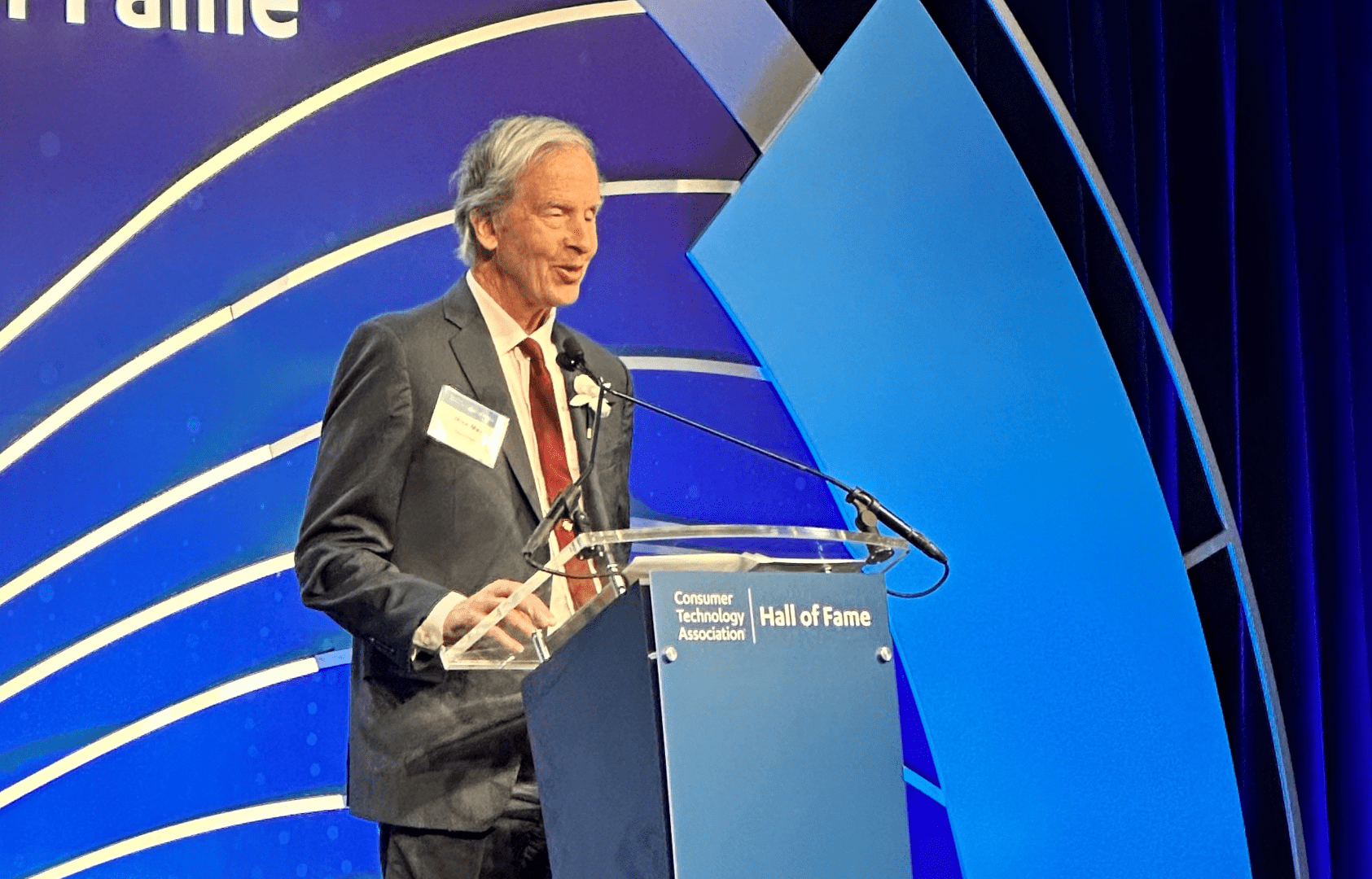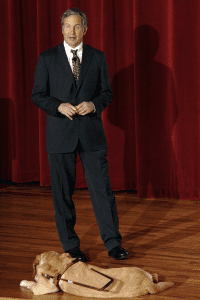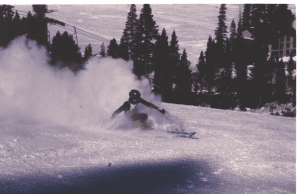Orders placed between March 27 – 31 will not ship until April 1 due to APH warehouse closure for inventory.
CloseThe Dot Experience Cast: Mike May

Mike May is an exceptional access warrior with extensive experience and knowledge regarding accessible navigation technology and a love for skiing. Join us as we learn about Mike’s life, career, and passion for helping others navigate and enjoy life.
Early Life and Vision
Dedicated to innovation and breaking barriers, Mike May says he was very fortunate to have his mother as his advocate after a chemical explosion left him blind with little light perception at the tender age of three. Giving him the freedom to explore, he was able to learn skills and “work arounds” on his own.
At 46, Mike received a STEM cell and cornea transplant, restoring some of his vision. “There are very few people who have gone from zero to low vision in the timeframe that I did,” said Mike. “It was a whole new world that I had to explore and figure out as a person with low vision. I learned that, like anything else; you have to integrate your skills, your capabilities, and resources.”
Career and Accessible GPS
Before Mike started working in accessible technology, he worked for many large companies and organizations, including the CIA. Over time, he became involved with startups, which eventually led him to accessible tech. Founding The Sendero Group in 1999, the first accessible GPS was born in 2000. After releasing 22 versions of the accessible GPS, The Sendero Group closed in 2018.

Mike has not stepped away from the world of accessible tech, however, and has consulted with companies like Uber about the accessibility of their apps. Currently a Navigation Technology Advisor at APH, Mike was inducted into the Consumer Technology Hall of Fame in 2023 alongside leaders from both Apple and Samsung and received a Bolotin award from the National Federation of the Blind in 2010.
Skiing and The Paralympics
An incredibly accomplished skier, Mike was 27 when he first participated in a program in Kirkwood, California that taught people who were blind to ski. “Because I had good balance from other sports, I picked it up immediately,” Mike said. He began racing competitively, qualifying, and winning three gold medals at the 1982 World Games in Switzerland. Mike also competed in the 1984 Paralympics, winning three bronze medals.

Mike set the downhill skiing speed record for a person who is completely blind at 65 miles per hour at Les Arcs in France. “I was actually disappointed because my goal was to go over 100 miles per hour,” Mike said. “The run wasn’t really intended to set any records, it was just ‘How fast can we go?’”
Connecting his enjoyment of skiing and sports back to the idea of learning skills and using “work arounds,” Mike said “Sports are a fun way to gain a sense of your environment and the ability to move freely and confidently. “It also helps with raising the expectations of sighted people around us who have rather low expectations of what a blind person can do.” He adds that skiing is all about having fun, being out in the fresh air, and meeting great people!
Thoughts on The Dot Experience
Having the opportunity to interact with some of the prototypes Solid Light is working on for The Dot Experience, Mike said he’s excited about the example The Dot Experience will set for museums all over the world. Like many people who are blind or low vision, Mike has never had complete access to a museum.
“You want to share your experiences, and you can’t share anything if you haven’t been able to access the information.” Mike said. “I’m really thrilled that The Dot Experience will not only allow access to exhibits but will set an example and show other museums how it can be done so that they can replicate that approach and technology.”
As one might expect, Mike is very passionate about the wayfinding technology that will be integrated into The Dot Experience. This technology will allow everyone to move through the museum independently at their own pace, something that is nearly impossible in many museums where people with disabilities must rely on a guide, a friend, or a family member to describe and guide them through exhibits.
Mike is just one of the exceptional individuals featured in The Dot Experience. From chefs and artists to skateboarders and beyond, these people who are blind or low vision are accessibility advocates. They are actively working to break down barriers, challenging stereotypes and misconceptions about blindness.
